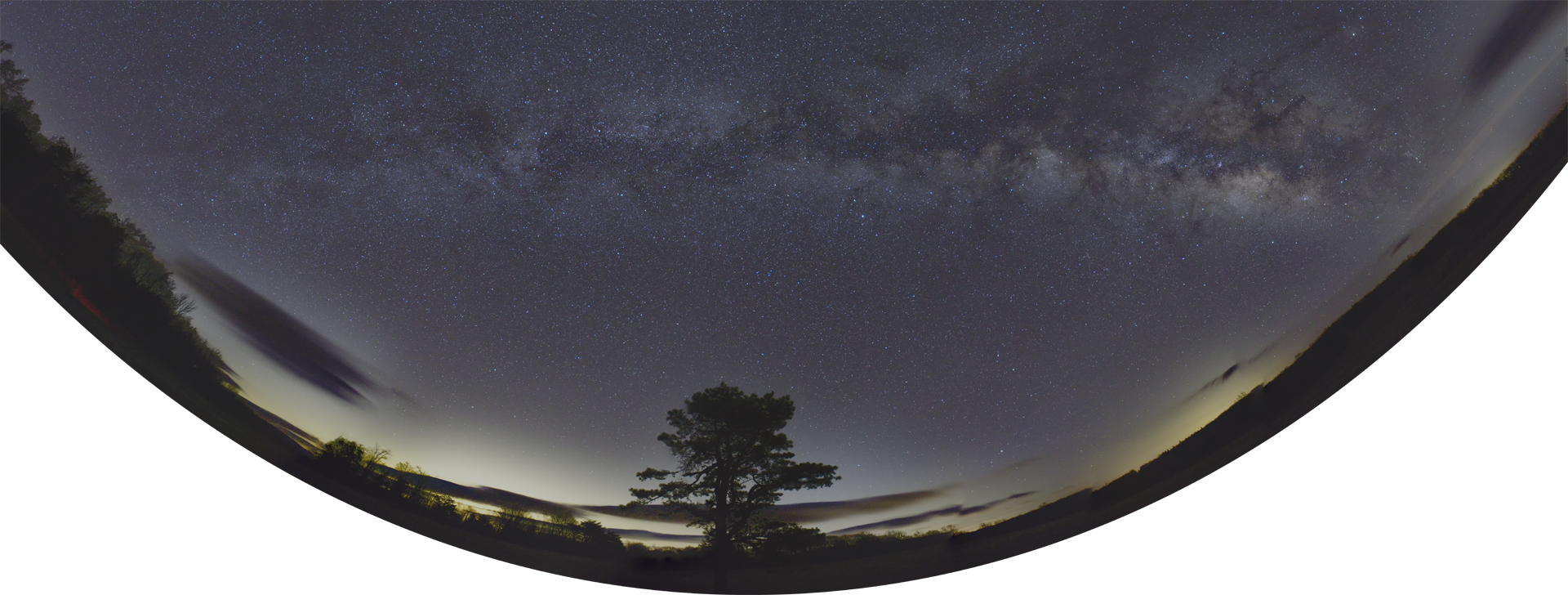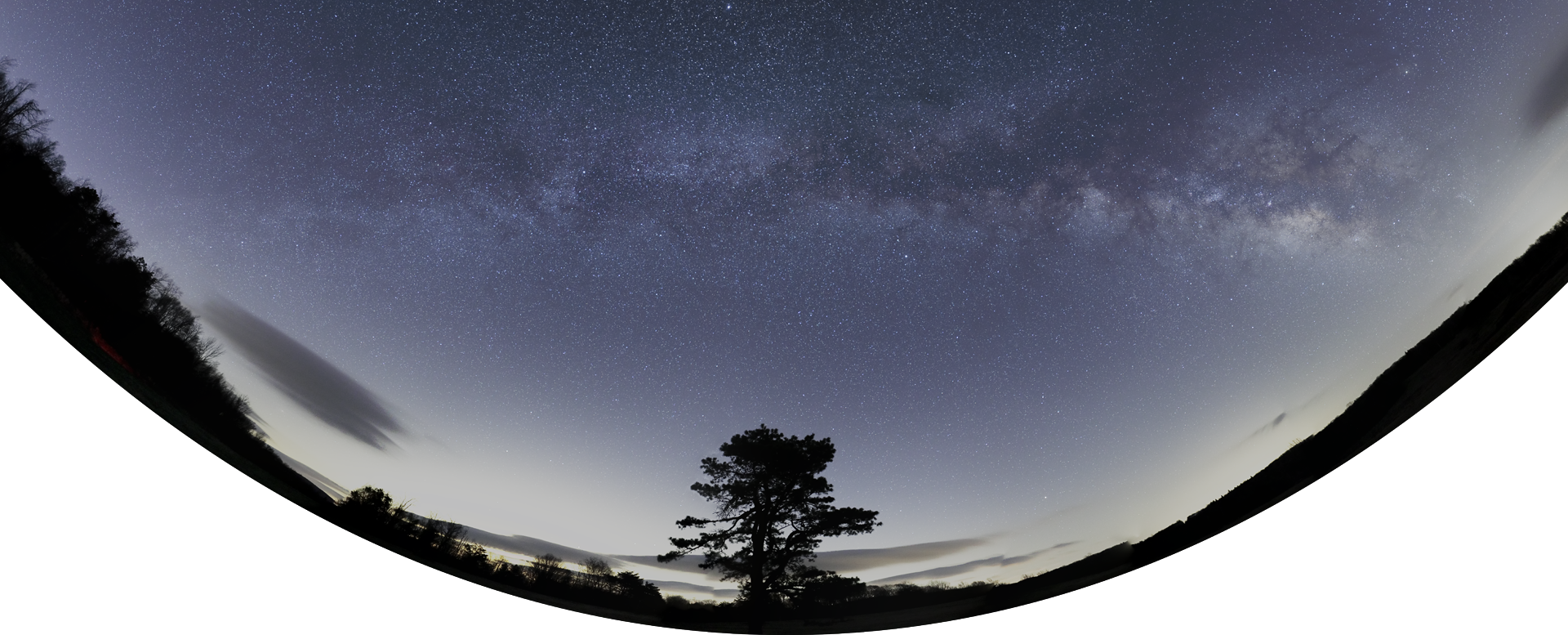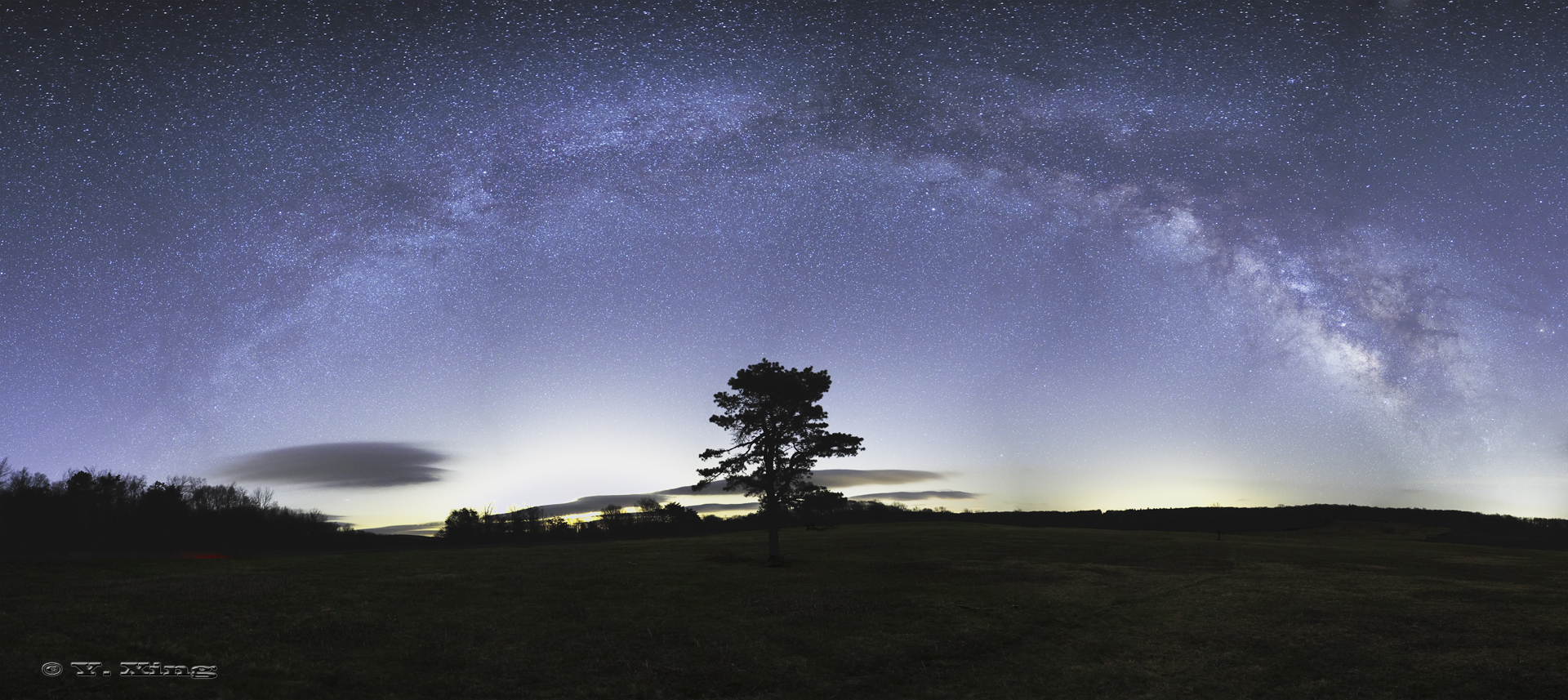
| The above is stitched from photos taken in experiment 2. There are more mismatches in the skyline and visible transitions between images. The main goal for this stitch is to produce an image of the band of the Milky Way so the Milky Way is straightened, which in turn warped the foreground. While Sequator, the software I use for image stacking, can work with raw files (from Canon 5D Mark IV), for some reason it turns many stars blue. So in the future raw needs to be exported to Tiff before being stacked in Sequator.
上图是实验二的结果。天际线更多的地方没对齐,还有更多的过渡痕迹。因为拼这张图的主要目的是出一条直的银河,所以把银河拉直了(所以前景弯了)。我用的叠图软件可以直接叠原始照片文件,但不知问什么会把许多星星变蓝。所以以后还得先把原始照片文件导出成Tiff格式再叠加。 |
Stacking re-done from Tiff (基于Tiff的叠加):


| (9/10/2021 update) The above is the stitch of two panoramas, one of which is a stitch of stacked sky/star images, the other made using a group of separately captured foreground images. Because the stacking process reduced the noise in the background, there is more room to push up the brightness of the image before it gets too grainy, making the Milky Way more distinctive. Due to the different way it is stitched, the arch of the Milky Way is also different this time.
(2021年9月10号更新)上图是两张全景图(天和地)的拼接。天的那张因为多图叠加背景噪音低,所以可以把图的亮度调的较高,这样一来银河就更明显。因为拼接过程的不同,这次银河的弧度更高。 |
| Aperture: 2.8 | Shutter: 8 |
| ISO: 6400 | Flash: |
| FL: 24 mm | Lens: EF24-70mm f/2.8L USM |
[←] Previous Next [→]
Index page of this album